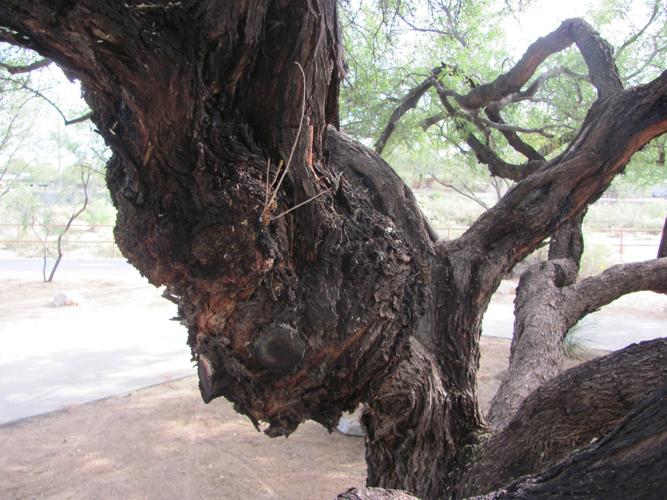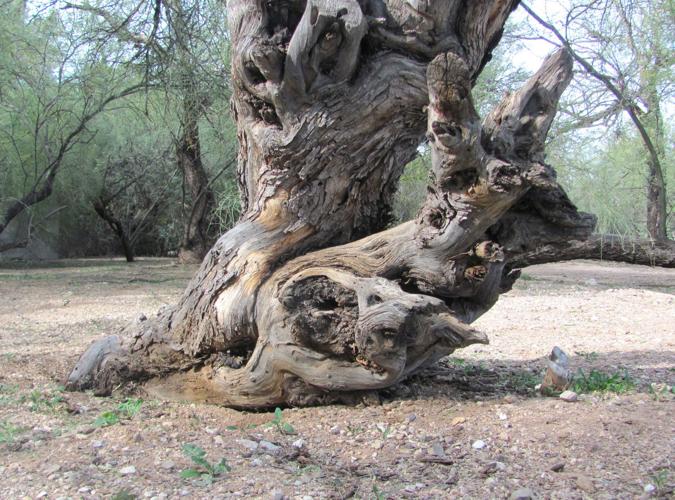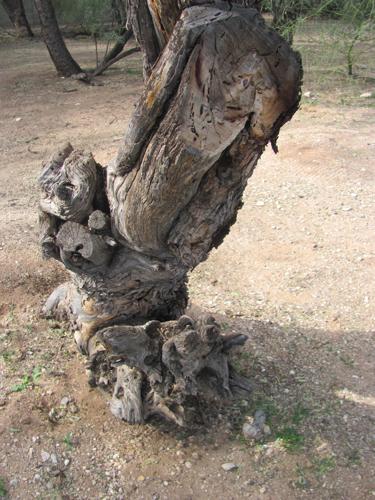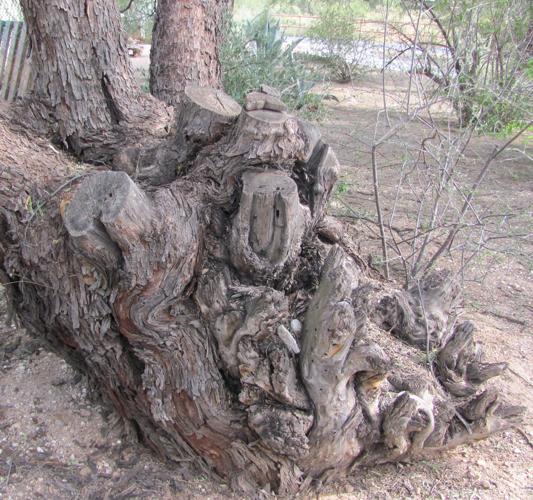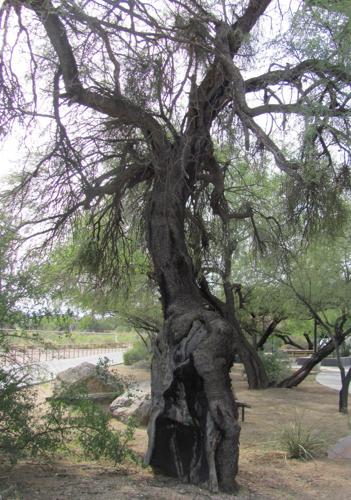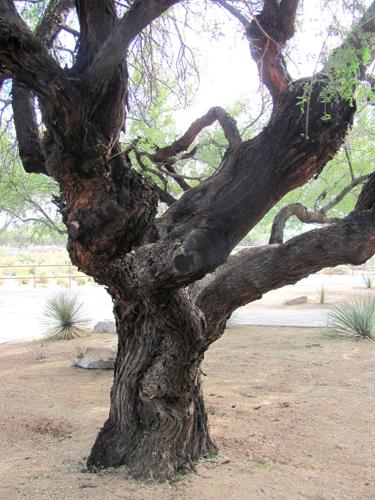We could call it “Gnarly Tree Park.”
It’s a park and trailhead along the Rillito River where numerous mesquite trees have strayed from normal growth patterns in favor of trunks with incredibly gnarled shapes.
These irregular growths, known as burls, occur in many types of trees. It’s uncertain what causes them.
Some science websites and tree experts suggest that stress — caused by virus, fungus or an injury to the tree — might cause burls to form. Insect or mold infestation are possible causes of burls attached to tree roots.
“In burl formation, the tree’s growth hormones get disrupted when the metabolism of the tree is hijacked by some other organism — a virus, fungus, or bacterium,” says an entry on the northernwoodlands.org website.
Burls don’t appear to cause much harm to trees or shorten their lives, according to a plant physiologist with the U.S. Forest Service who is quoted on the website.
The unusual formations are prized by some artists, wood sculptors and furniture-makers because of their relative rarity and perceived beauty. They’ve also been the targets of “burl poachers” on some public lands.
For those who just want to observe burls up close, one place in Tucson is at a river park trailhead and parking lot along the Rillito River just west of North Craycroft Road.
A variety of gnarled burls are evident on mesquite trees growing around the parking area and trailhead, which is popular with walkers, runners and cyclists.
As with all vegetation on public lands, it’s important to leave the trees as they are without defacing or damaging them.


